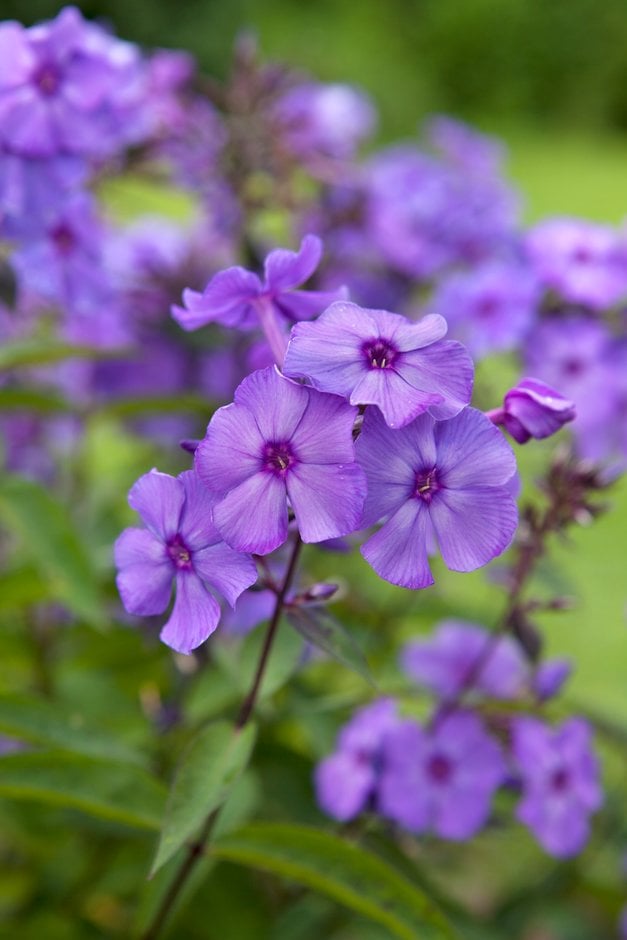Phlox paniculata 'Blue Paradise'
perennial phlox 'Blue Paradise'
A clump-forming, upright perennial to 1.2m tall, with mounds of lance-shaped, dark green leaves. Rounded heads of fragrant, dark-eyed violet-blue flowers appear from July through to September
Size
Ultimate height
1–1.5 metresTime to ultimate height
2–5 yearsUltimate spread
0.1–0.5 metresGrowing conditions
Moisture
Moist but well–drainedpH
Acid, Alkaline, NeutralColour & scent
| Stem | Flower | Foliage | Fruit | |
| Spring | Green | |||
|---|---|---|---|---|
| Summer | Blue Purple | Green | ||
| Autumn | ||||
| Winter |
Position
- Full sun
- Partial shade
Aspect
West–facing or South–facing or East–facing
Exposure
Exposed or Sheltered Hardiness
H7Botanical details
- Family
- Polemoniaceae
- Native to GB / Ireland
- No
- Foliage
- Deciduous
- Habit
- Bushy
- Genus
Phlox may be evergreen or herbaceous, mat-forming or erect perennials or shrubs, with simple leaves and salver-shaped flowers in terminal clusters
- Name status
Accepted
How to grow
Cultivation
Grow in fertile, moist soil in full sun or partial shade
Propagation
Propagate by division in autumn or spring. Propagate by basal cuttings in spring or propagate by root cuttings in early autumn or winter
Suggested planting locations and garden types
- Cottage and informal garden
- City and courtyard gardens
- Prairie planting
- Wildlife gardens
- Flower borders and beds
- Cut flowers
- Wall side borders
Pruning
Deadhead to prolong flowering then cut down to the base in late autumn
Pests
Generally pest-free
Diseases
May be susceptible to a downy mildew and a leaf spot
Get involved
The Royal Horticultural Society is the UK’s leading gardening charity. We aim to enrich everyone’s life through plants, and make the UK a greener and more beautiful place.
